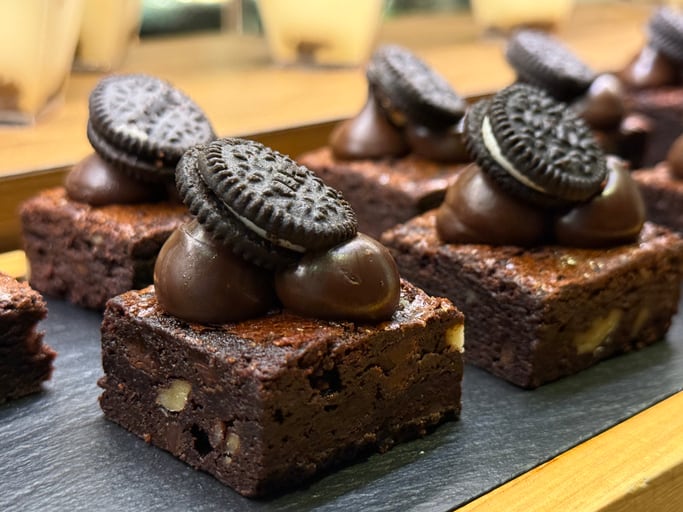Consumers consistently turn to sweet baked goods for joy, but new proprietary insights from Cargill reveal that the way shoppers achieve that joy varies by category and department.
The survey of more than 5,000 consumers distinguished sweet baked goods from other snacks, like bars or nutrition products. Unlike functional snacks that address satiety, categories like cookies, cakes and donuts deliver emotional benefits.
Joy “came through loud and clear,” said Keith Albright, consumer insights manager, Cargill. “When we think about sweet baked goods, it’s going to be about satisfying a craving, about taste. But what came out of the study is overwhelming – this notion that sweet baked goods bring joy to my life.”
Albright emphasized that while joy is the overarching driver, the way consumers experience it depends on the product and where it is sold: in-store bakery, center store and refrigerated.
“When you look at those categories, the way to achieve joy is very different,” he said.
For example, consumers are looking for “homemade taste” for cupcakes and “indulgence” for donuts, according to the survey.
Familiarity wins first, then twist up flavors
As shoppers lean on familiar options for social occasions, brands should anchor their innovation in known formats and flavors, Albright notes.
“If I’m going to a dinner party, I’m not going to bring wild, very different cookies. The ultimate is if nobody eats them, they’re not delivering on the need. Deliver on the familiar, and once you do, then consumers will try a variation.”
Demand drivers versus basics
Cargill distinguishes between “basics” (the must-haves, like a cookie tasting like a cookie) and “demand drivers,” the attributes that build loyalty and repeat purchases, Albright explained.
“If we can help our customers focus on those demand drivers, then we can start to have next-level discussions on how our ingredients fit in with that,” he said.
In-store bakery, for instance, should “taste freshly baked,” Albright said. Center-store cookies and refrigerated dough needs to guarantee consistency, according to the survey.
Pricing pressures and value perception
Even with rising ingredient and supply chain costs, affordability was not the top attribute for baked goods consumers, per Cargill. Instead, shoppers place more value on “feels more premium” and “worth the indulgence,” Albright clarified.
“Don’t be afraid, retailer A or manufacturer B, to offer the consumer what they want versus the lowest price option of what they want,” he said.
Takeaways for CPG brands
For CPG brands, the key is to tailor strategies by department – what wins in the in-store bakery will not necessarily translate to the center aisle, so R&D and marketing need to reflect those distinct consumer expectations, Albright explained.
Shoppers also want familiar favorites first, with novel flavors and formats best introduced as a twist on the tried-and-true, according to the survey.
Consistency and quality remain non-negotiables, since basics like freshness, taste and a reliable “turnout guarantee” determine repeat purchases, Albright said.
Premiumization is another opportunity where consumers will pay more if they perceive quality and indulgence, especially when it enhances the occasion.
Finally, adjusting pack size can resonate with GLP-1 users and portion-conscious consumers, provided it is framed around delivering peak freshness rather than simply cutting costs, he added.




